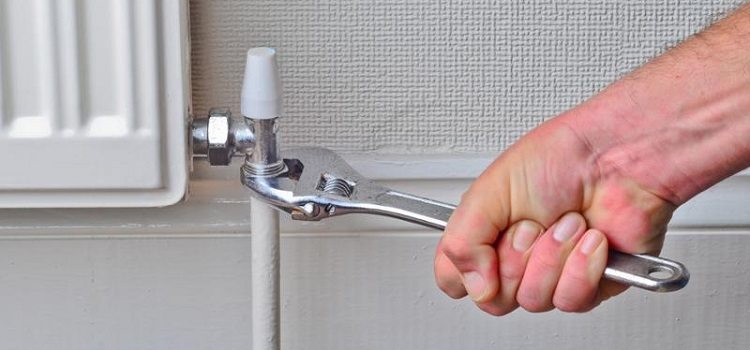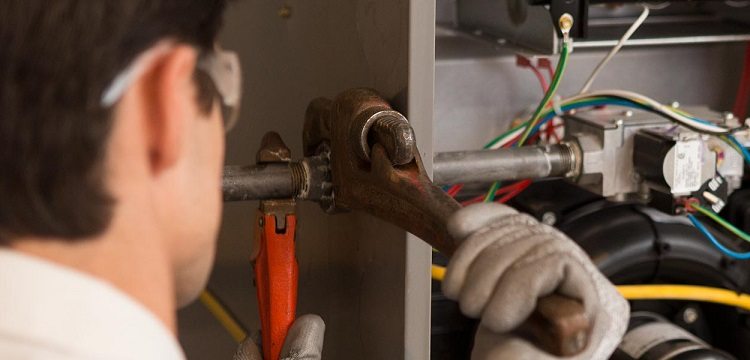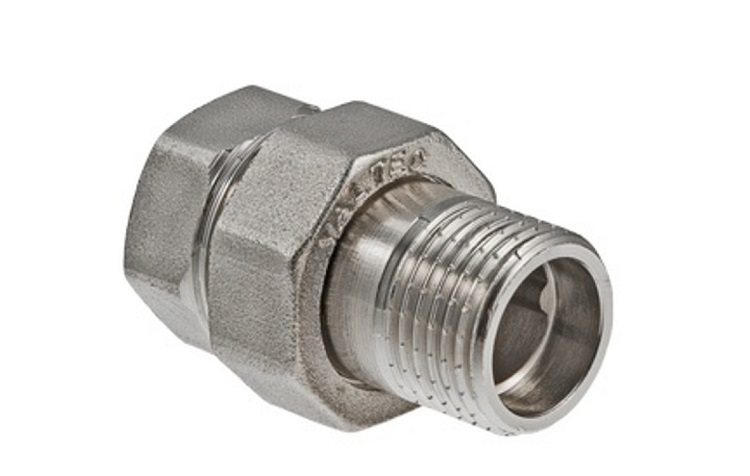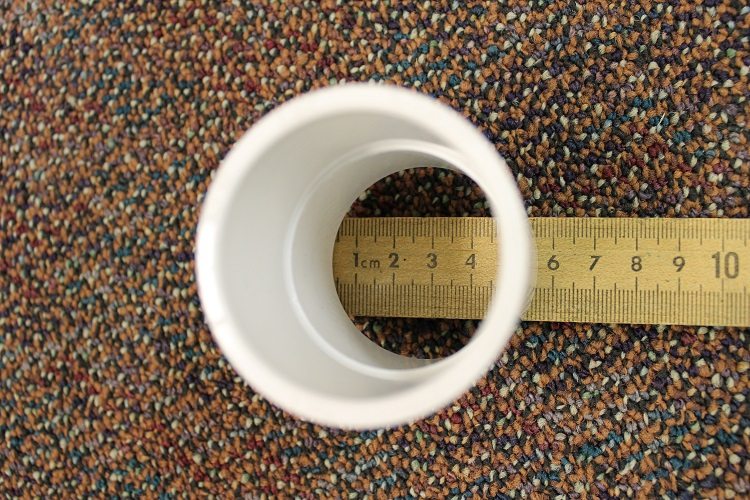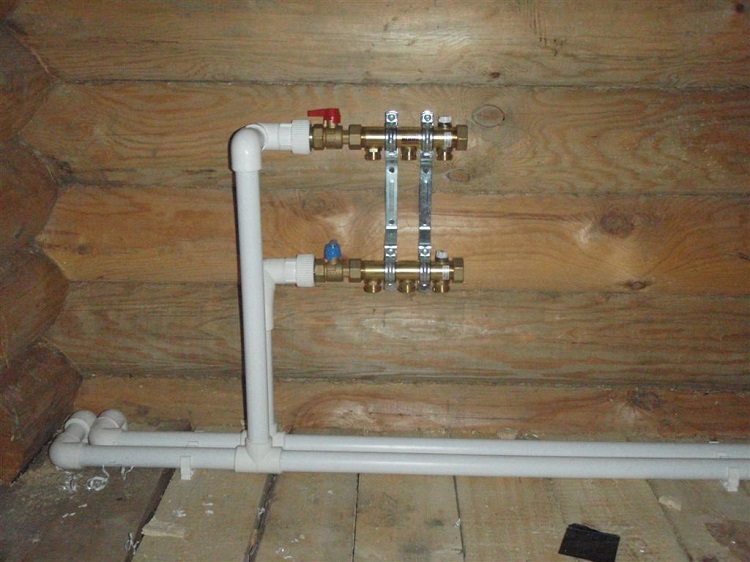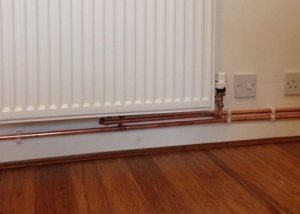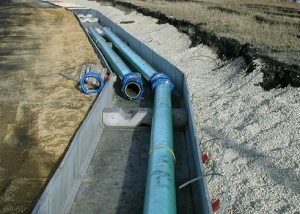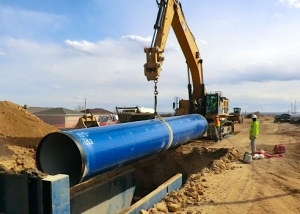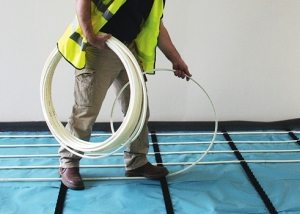The construction of a private household is associated with the care of comfortable living, and it is unthinkable without high-quality and economical heating. The design of the heating system, including steam heating and underfloor heating, is entrusted to specialists. The choice of the boiler depends on the efficiency of a particular boiler model and the fuel it consumes. And the pipes for heating a private house should correspond to the power of the boiler and the total load of the entire system.
Content
- 1 What determines the choice of pipes for installing the heating system?
- 2 Features of the heating device in the private sector
- 3 Varieties of pipes and types of their connection in the heating system of a private home ownership
- 4 What pipe diameter is suitable for heating in a private house?
- 5 What is important to consider when choosing a wiring system?
- 6 The main types of pipes for heating and their parameters
What determines the choice of pipes for installing the heating system?
The building materials market provides ample opportunities for choosing pipes for heating a private house, which one to choose depends on many factors. Consulting in a construction supermarket is ineffective; retail chains are interested in selling stale and expensive goods. Private houses are sometimes connected to the citywide system. For this option, calculations are made according to established standards. Individual construction is calculated according to another scheme.
The house will be cold with poor insulation or mismatch:
- pipe sections;
- total housing area;
- boiler design capacity;
- type of fuel.
All heating pipes for a private house meet certain criteria. It depends on the type of heating system:
- hidden;
- closed.
Accordingly, there will be different temperature loads and susceptibility to temperature extremes. Built-in pipes are laid:
- along the outer perimeter of the house;
- inside the building;
- under the floor.
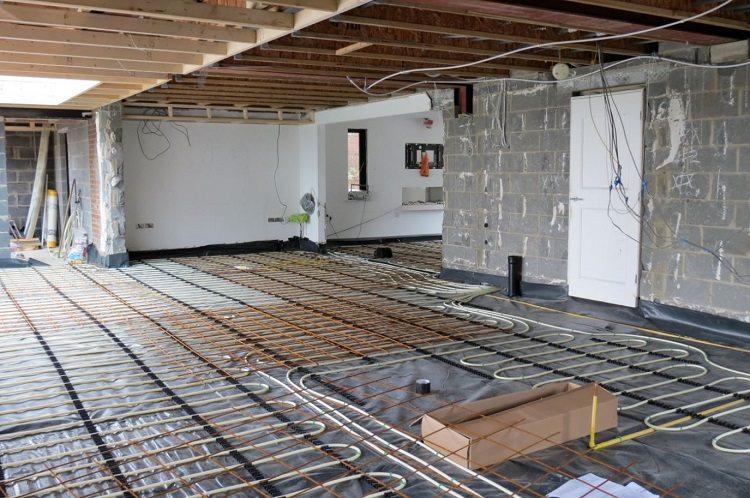
The type of future heating network is one of the important factors when choosing pipes, for example, flexible pipes are required for a warm floor
In multi-apartment buildings, in order to save money, they arrange an individual heating system; such heating is best done from the same pipes and in the same way as in a private house. It is important to take into account the likelihood of water hammer when starting seasonal heating, although most materials can withstand this load as well.
Features of the heating device in the private sector
Autonomous heating in a private house is not subject to city tariffs, there is no surcharge for heating the heating main to the house, therefore it is more economical. An expensive boiler will pay off in a few years, regardless of its type. The following models are offered for selection:
- solid fuel;
- gas;
- combined.
The overall cost-effectiveness of an independent heating system is hidden in the possibilities:
- to regulate the heat in the house in manual mode;
- turn off heating or reduce the process of allocating gigacalories;
- increase or decrease the number of radiators;
- open and flush the system yourself;
- Do not use heating unnecessarily and during warming;
- independently determine the start and finish of the heating season.
The installation method of the system depends on the choice of pipes for heating a private house, you can do it yourself or resort to the services of specialists.The choice comes down to whether it will be pipes:
- Metal.
- Polymer.
- Composite
Note! Pipes from metal are a priority among private developers - because of their ability to withstand heavy loads. But for the embedded system inside the walls of the house, metal-plastic pipes are enough, they can be used in that part of the system where the water will not be very hot.
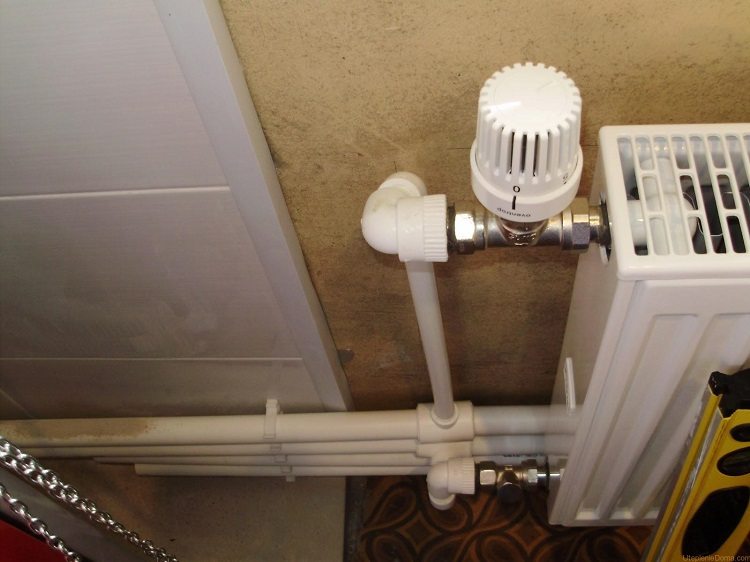
An important advantage of autonomous heating is the ability to regulate the heat supply independently.
To determine which pipes to use for heating a private house, it is important to consider all the parameters of the heating system:
- gravity or forced;
- simple or complex scheme;
- for a one-story or multi-story building;
- with little or maximum pressure;
- under hot or warm water.
Varieties of pipes and types of their connection in the heating system of a private home ownership
The construction market offers to use a choice of 2 types of pipes - polymer and metal. Composite pipes are polymeric materials, although they combine plastic and metal (for reinforcement).
Polymer include:
- Plastic and metal plastic.
- Crosslinked polyethylene.
- Polypropylene.
For pipes use metals:
- Iron and stainless steel.
- Black carbon steel (cast iron).
- Copper.
Note! In one heating system, you can use a different type of material, metal-plastic and iron pipes, but the correct choice of their joint and installation is important.
Metal pipes for heating are mounted in several ways:
- gas welding;
- threaded connection;
- docking with couplings and flanges.
Those who intend to independently install the heating system without welding will find it easier to work using the articulation with thread - couplings and flanges. These methods are not used as often as welding, but are quite applicable when choosing pipes from different metals for heating for a private house.
Butt joint method of pipes need:
- couplings of appropriate section,
- sealant
- nuts and bolts;
- flanges;
- rubber pads
- clamping and sealing rings.
Threaded connections are used for laying the heating main and connecting equipment. All joints with thread are sealed with Unipak sealant, tow or FUM tape. The market also offers the use of quick-mount connection elements, such as the "American". With a simple threaded connection, the ends of the pipes should be with a screw notch, and it is better to make a thread on a trimmed section with a special tool.
For this type of joint, the whole set for fastening and branching pipes is purchased:
- "Barrels" (threaded couplings);
- adapters from one pipe diameter to another;
- rotary elements (crosses, corners, tees).
Welding circuitry - time-tested method. The pipeline will turn out to be durable and durable, but one cannot do without a specialist with welding equipment.
With any method, it is important to flush the system, and it is better to do a connection check before starting the heating system to detect leaks. It is not so important what pipes the heating in a private house was made. In case of leakage, they are equally successfully sealed with clamps with rubber gaskets or polymer cold welding.
What pipe diameter is suitable for heating in a private house?
To determine which pipes are best to choose and with what diameter of the clearance they should be, the easiest way is through simple calculations:
When calculating the following:
- Flow rate.
- Total heat load.
- Total living space.
- Climatic features of the region.
What are the norms? According to standardization, with ceilings of 3 meters, about 100 watts of energy is required to heat 1 square meter of a house.The speed of the coolant (warm water) in the system is within 0.4 - 0.7 meters per second. For a room up to 20 square meters, 2 kW is required, plus 20-30% - for losses and external temperature fluctuations. Accordingly, 2 radiators per 1.2 kW are required for each window. But there is a choice - it is better to install 1 large radiator for a total of 2.4 kW under one of the windows.
Along the cold external wall or on both sides of the large balcony door, preference should be given to vertical radiators with a decorative shield. They are recommended for installation in the children's room. For any type of radiator, pipes with an internal cross section of 10 mm or more are installed, which are easier to rinse if necessary.
According to standardization, the temperature of the coolant in the heating system for residential buildings should not exceed 90-95 ° C. Regardless of the choice of pipes for heating a private house, this threshold is important to observe.
Metal pipes are used for heating systems with gravitational (natural) or combined circulation.
Their diameter is selected under the nozzle of the solid fuel boiler (maximum), then it can decrease.
In modern boilers, the diameter of the outlet is up to 50 millimeters, the “return" should be the same. After branching, the diameter usually decreases, and in closed systems, pipes most often have 12.7 millimeters of internal cross-section.
Note! The pressure in the heating system of a private home ownership is 2-3 times lower than in urban conditions of centralized heating, that is, about 1.5 atmospheres. Under these conditions, any type of pipe is not threatened by water hammer or increased heat load. Therefore, when choosing a pipe for heating a private house, the owners themselves have the right to decide what is better and more economical to purchase.
What is important to consider when choosing a wiring system?
Designing a heating system is best left to a specialist. Depending on the architectural features and number of storeys of a private house, a different layout of the heating system is used.
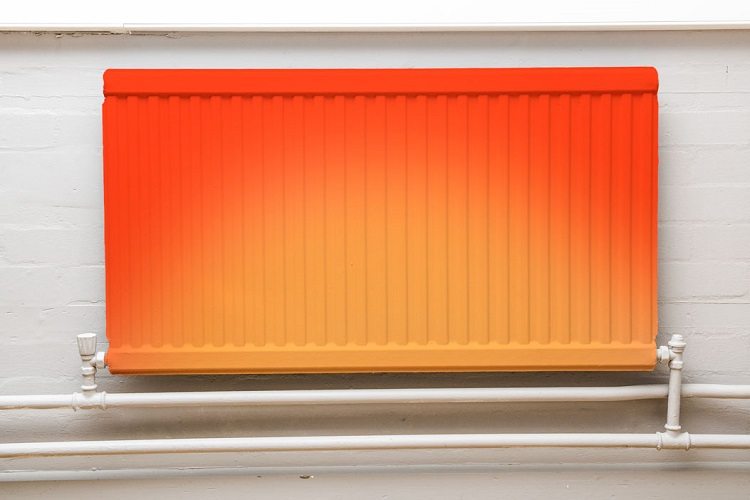
For a two-pipe heating system, almost twice as many materials will be needed than for a single-pipe heating system, this also needs to be taken into account when making an estimate
Metal pipes have no wiring restrictions:
- radiation (collector);
- single tube;
- two-pipe.
The most common 2-pipe scheme, including the upper and lower wiring, which provides quick and uniform heating of radiators. This is important to consider when calculating what kind of pipes are needed for heating a private house, and how many linear meters they will have to be purchased.
The main types of pipes for heating and their parameters
Pipes made of metal. Previously, heating in a private house made of iron pipes was uncontested, since there was nothing else. Pipes made of such a material served long and flawlessly, but this metal is subject to corrosion, and rust gradually clogged the duct. I had to look for a solution to the problem of how to flush the heating pipes in a private house.
Ensuring the operation of a self-flowing autonomous heating system involves the use of a large section pipe. Steel pipes do a good job of this in a system of solid fuel boilers and furnaces with heat exchangers. Galvanization and steel are always better than ordinary iron pipes.
Advantages of heating using iron, steel or copper piping:
- resistance to high temperature;
- high strength;
- simplicity of operation;
- sufficient thermal conductivity;
- the ability to bend the pipe and make any angle during heating and installation;
- metal stiffness minimizes the number of fastenings to walls and other vertical surfaces;
- low cost and availability of components for connection without welding (elbows, adapters, couplings, corners of cast iron and steel);
- withstand significant mechanical stress and internal pressure;
- the ability to use pipes and small parts from other metals in one system;
- the service life of steel and iron is about 40-50 years (depending on the quality of water and its temperature), copper - more than 100 years.
It is recommended to choose copper pipes - the most durable and reliable, but expensive. They tolerate high warming and freezing without any problems.. But installation is better to entrust to specialists.
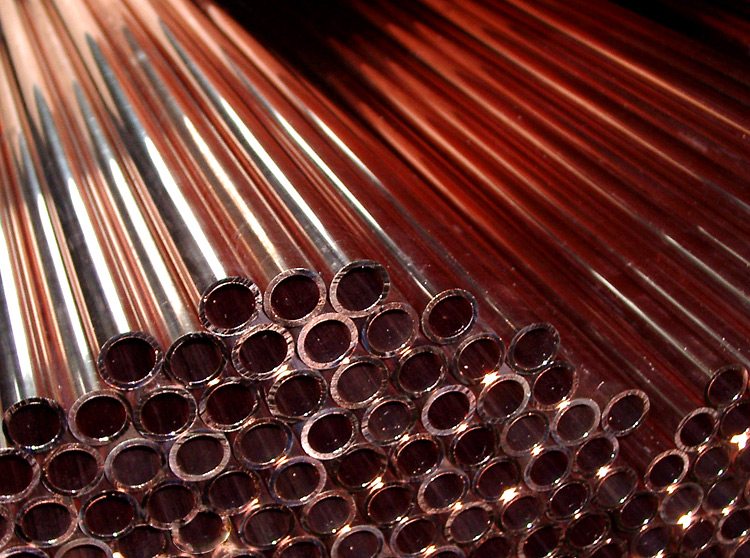
Copper pipes are considered one of the best materials for installing heating, but the cost of such a network will be higher than systems from any other type of pipe
The disadvantages of metal:
- heavy material requiring additional shipping costs;
- high-quality installation of the system involves welding;
- a longer pipe-laying process than joining fragments from polymers;
- uneven inner surface of iron leads to the accumulation of precipitation and oxides, especially in turning areas, it is difficult to dismantle and wash;
- external and internal corrosion, it is undesirable to lay them with a hidden heating system (in the walls);
- the need for frequent painting of pipes and radiators;
- significant heat loss in cold rooms;
- expensive welder services.
Advice! Such a choice is undesirable when there is an intention to mount the pipes in the wall. They gradually oxidize and rot, especially around the outside of the house.
Polypropylene pipes. Affordable Option heating system. The marking indicates the permissible temperature amplitude. The positive qualities include:
- smooth-walled inner lumen, which eliminates the possibility of rapid formation of sedimentary deposits, which means that the need for internal cleaning will be less;
- low specific weight, which makes them preferable when arranging a subsiding house or based on moving soils, cheaper transportation;
- can be mounted on the wall according to the closed type scheme;
- the material expands less when heated than metals, it is not necessary to paint often;
- at a low temperature, the pipes are not subject to deformation and serve for quite a long time - from 20 years;
- Do not freeze when the heating of a country house is occasionally turned on in winter;
- ease of maintenance (cleaning and washing).
Disadvantages:
- a special type of connection is required (apparatus for soldering plastic and polymers);
- pipes are inelastic, fittings are used in turning sections;
- the finished pipeline is difficult to repair or rinse, it is necessary to replace the sections between the two fittings;
- low temperature resistance - up to 70 ° C, occasional heating - up to 90 ° C;
- low pipe stiffness (sag on long fragments between fasteners).
It is important to consider! Installation of a hidden type involves some expansion of the heating system and the installation of expansion joints.
Cross-linked polyethylene (PEX) pipes for water supply. The name is associated with a special technology for the production of adhesions at the molecular level.
Advantages:
- sufficient resistance to high pressure and elevated temperature - working load of about 90 ° C;
- high density of material;
- special properties when heated - the pipe bends to the desired angle, with repeated heat treatment takes its previous shape (memory effect);
- material durability - from 50 years;
- low specific weight, which simplifies transportation and installation, minimizes the load on the foundation;
- simple installation using connections such as press fittings;
- smooth inner lumen prevents the deposition of calcium precipitation;
- due to the small linear expansion, this is the best material if you decide to make an internal heating system.
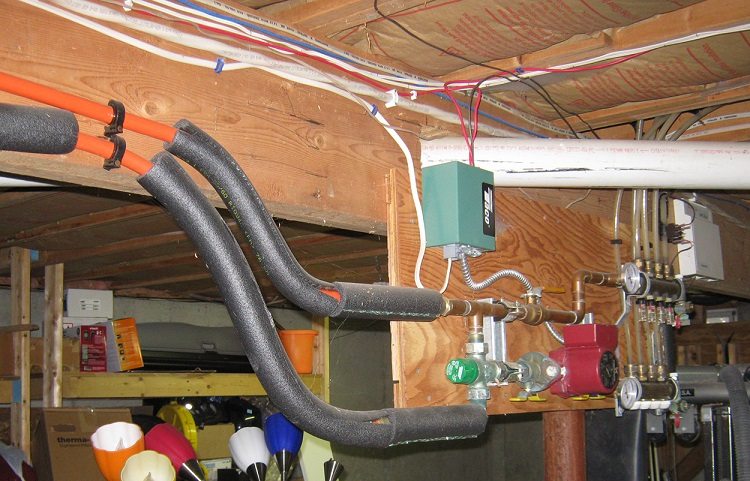
Cross-linked polyethylene pipes are used in systems of varying complexity, they are also combined with other types of pipes
There were no significant shortcomings; you can choose such pipes for any circuit.
Plastic pipes. One of the most popular types of pipes for heating a private house. What makes them better than others? It is affordable and easy to install. Metal-plastic combines the advantages of polymers due to the multilayer type of “crosslinking”. Inside - smooth plastic, metal foil reinforcement plus a protective outer layer that does not require painting.
There are no significant flaws, but fitting and other components are expensive, and they have a narrowing of the cross section, which reduces patency. However, it is not advisable to use such pipes in country houses, where the use of heating is seasonal: they freeze when frozen. If you choose them for a country house with permanent residence - this is ideal.
Today, there are many types of pipes for heating, each of which is attractive in its own way to the buyer. However, which products to use depends on many factors. Before you make a purchase, you need to study which features of one kind or another will be a plus for you, and which ones will be a minus, and based on this, make a decision.
